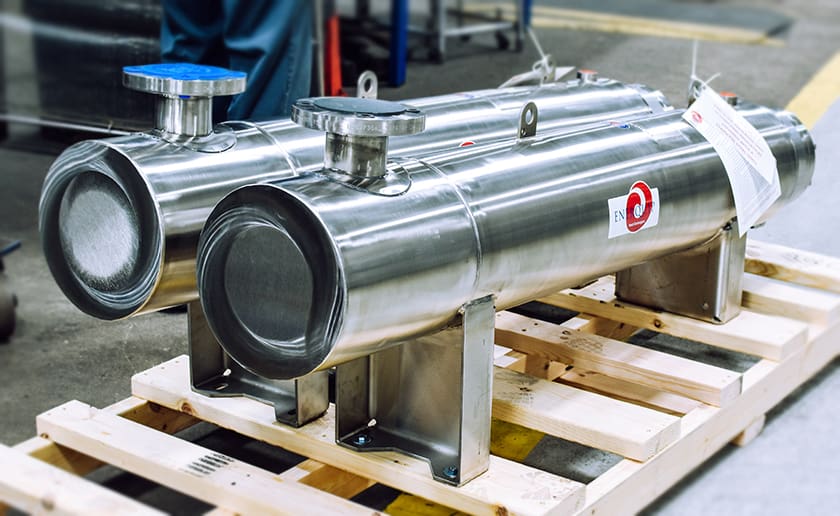In the food, beverage, and pharmaceutical industries, three things are non-negotiable: product quality, minimal downtime, and strict sanitation. But achieving all three? That takes more than elbow grease—it requires smart design, thoughtful planning, and the right equipment.
One key part of that strategy is a clean-in-place (CIP) system. These systems are widely used to clean the interior surfaces of pipes, vessels, heat exchangers, and other process equipment—without having to disassemble anything. They’re efficient, effective, and meet the strict standards set by regulatory bodies like 3-A Sanitary Standards.
Key Components in a Clean-in-Place (CIP) System
CIP systems come in a range of styles and configurations, but most share some essential components:
Core Equipment May Include:
- Pumps for introducing chemical sanitizers and water
- Valves for flow control
- A heat exchanger on the supply side to maintain cleaning solution temperature
- A system for recording data such as temperature, cycle times, and material usage (manual or digital)
Common Tank Configurations:
- Single-tank systems: Combine rinse and wash in one cycle
- Two-tank systems: Separate rinse and wash for better control
- Three-tank systems: Add a recovery tank to reuse solutions
- Four-tank systems: Include additional storage for acid, alkaline, or sanitizing agents
Depending on your cleaning goals, CIP systems can be one-pass (with precise chemical dosing) or multi-pass (requiring more tanks for solution reuse).
How Water and Chemicals Are Delivered
Distribution within the system is also key. The two most common delivery methods are:
- Spray balls: Best for processes that don’t require high pressure
- Rotary spray heads: Ideal for applications needing higher impact cleaning
Regardless of the spray method, it’s critical that all interior surfaces are fully reached. A missed spot—especially in hard-to-clean areas—can lead to contamination, product quality issues, or compliance violations.
How Flow Rate Impacts CIP System Effectiveness
Flow rate is an important factor in CIP performance. While it might seem like “more is better,” high flow rates also increase water, energy, and chemical usage. The sweet spot? Just enough flow to ensure thorough cleaning without unnecessary cost or waste.
When a cleaning issue arises, the instinct may be to crank up the flow. But in many cases, other targeted solutions are more effective—especially in tricky spots like bends, corners, and dead legs (like those found in U-tube heat exchangers).
Alternative Cleaning Strategies:
- Pulsating or reversing flow to create turbulence
- Ice pigging (flushing with an ice slurry)
- Effervescent solutions that generate wall-shear stress
- Jet cleaning to direct force at hard-to-reach areas
- Pre-draining lines before the CIP cycle to create a stronger initial surge
Why CIP System Documentation Matters for Compliance
Regulatory agencies require food manufacturers to document cleaning processes. Fortunately, many modern CIP systems do this automatically—but automation doesn’t mean hands-off. Frequent review and manual checks are still essential.
Today’s software-based CIP event recorders can track:
- Cycle start and end times
- Chemical and water usage
- Interruptions or deviations in the process
- Operator interventions (pauses, aborts, extra steps)
- Missed or repeated steps
These tools not only improve traceability and compliance—they also provide insight into trends and issues that might otherwise go unnoticed.
Improve CIP Performance with the Right Heat Exchanger
If you’re upgrading your CIP system or building a new one, the right heat exchanger can make all the difference. A high-quality stainless steel shell and tube heat exchanger is built for both efficiency and cleanability—and plays a key role in maintaining sanitary conditions.
At Enerquip, our knowledgeable team understands the importance of meeting 3-A, ASME-BPE, and other stringent industry standards. Whether you’re designing a new CIP system or retrofitting an existing one, we’re here to help.
Contact us today to learn more about our sanitary heat exchanger solutions.

